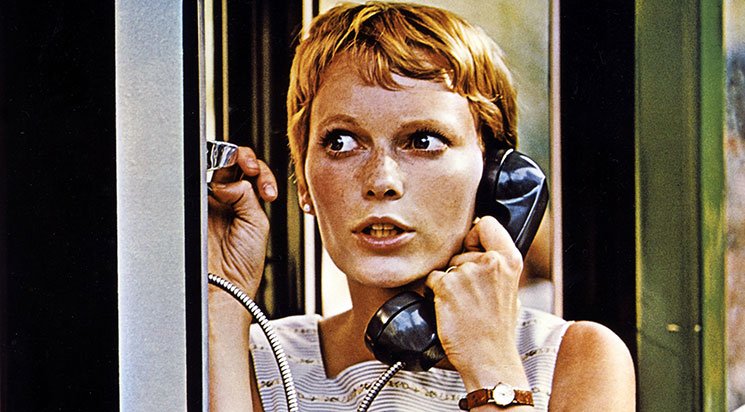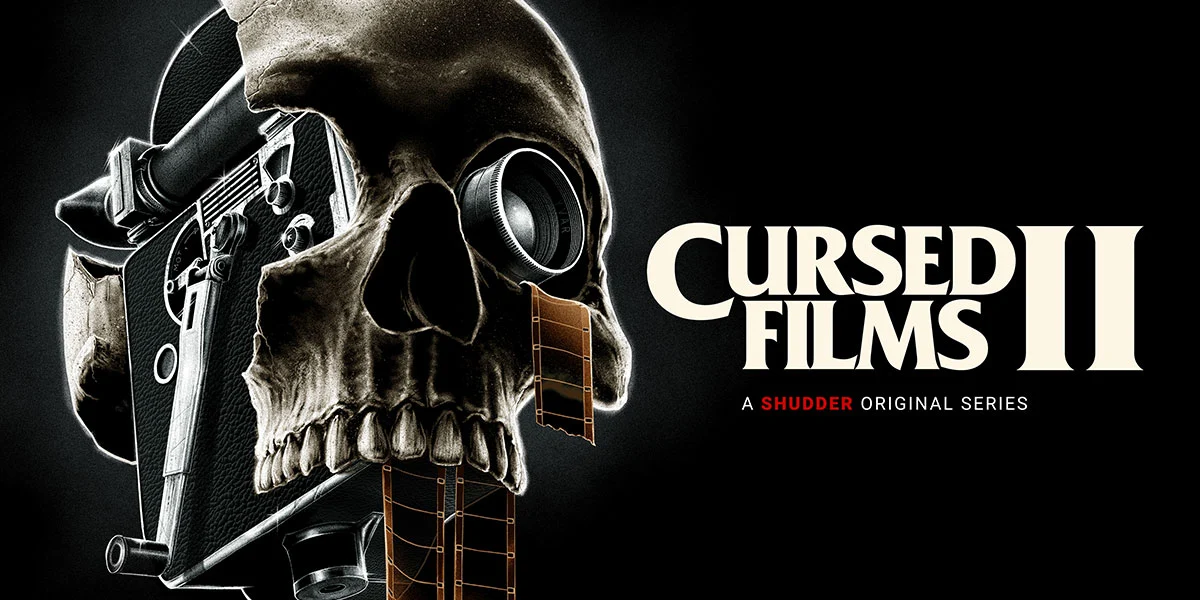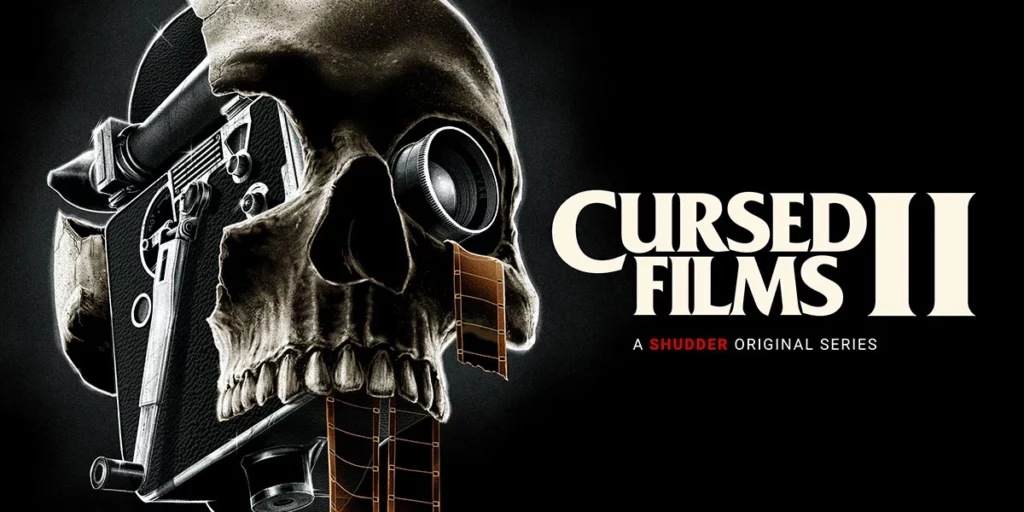Cursed Films II Episode 2 is a deep descent down the rabbithole of 60s Hollywood and the indirect impacts of Rosemary’s Baby.
When Rosemary’s Baby released in the summer of 1968, it was critically and commercially acclaimed with the promise that the world had only just seen the beginning of Roman Polanski in the Hollywood system. The satanic content naturally raised tensions from the more religious folk but the impact it made not just on horror but Hollywood as a whole was immense. Gone were the days of horror movies tackling stories of vampires and supernatural beings. Rosemary’s Baby tackled the darkest creature of all: humans. With episode 2 of Cursed Films II, we see the impact of Polanski’s debut Hollywood feature but also the indirect downward spiral of blood, death and violence it unknowingly caused.
At the time Rosemary’s Baby released, America was at one of its most divided moments in history. The Vietnam war and civil rights movement as well as the assassination of Martin Luther King Jr just two months prior to the film’s release had brought tensions to a boiling point. The youth of America began to revolt against the America system and the seemingly solid media foundations because of this revolt began to shake. Film at this point had fallen into a natural formula as Hollywood figured out what worked for them and what didn’t.
Episode 2 of Cursed FIlms II particularly touches on the beginning of production of Rosemary’s Baby and traces through the steps of its development as William Castle attempted to get the role of director on the film but was rejected for the hot new director that was Roman Polanski. From the very beginning, Rosemary’s Baby was setting itself up to be a much different beast. It was new and it was exciting, with fresh stars such as Mia Farrow at the forefront. When it was finally released, it was swept into the socio-political zeitgeist of an angry America. The old face of the country turned their nose to it and the new face had taken it in with open arms. Early in episode 2 of Cursed Films II, We see a brief exploration of satanism as a religion through its followers and experts on the matter. Rosemary’s Baby had been released two years after the church of Satanism was founded and the idea of who Satan was to the general public had evolved from the man with horns who punished bad people for their misdeeds. Instead, he offered a separate and new form of religion that was accepted with open arms as the 60s pulled the mechanisms of culture into a bold new direction. A direction that was more accepting but one that was also a powder keg ready to explode.
Much of Cursed Films II ‘s episode 2 doesn’t necessarily focus on the production of Rosemary’s Baby itself unlike other episodes of the series. Instead, it analyzes the culture and tragedy that exists around it. One year after the release of the film in 1969, Sharon Tate, the wife of Roman Polanski was murdered alongside her friends in their home by members of The Manson Family. Charles Manson had existed as a form of evil that was hiding behind the shadows for a few years prior to this point. As he gained more followers in his “family”, his teachings and ruling began to become more sinister. The White Album from The Beatles had unintentionally become a call for a racist war from Manson’s own interpretations and at a time where the new culture direction of America called for peace and belonging, it came to a bloody end no one expected.

Episode 2 of Cursed Films II is the deepest that the series has dipped into the world of conspiracies and the underbelly of supernaturalism within reality. Much of the episode focuses on the bloodshed that Hollywood and Los Angeles has taken on such as the many deaths occurring in the neighborhood of Benedict Canyon, where Sharon Tate was also killed. As well as this, it examines the strange coincidences that occurred both directly and indirectly from the film like Beatles member John Lennon’s death occurring in the exact same spot as a character from Rosemary’s Baby as well as the death of the film’s composer Krzysztof Komeda from a haematoma in the brain that led to him falling into a coma and dying 3 months later, much like a character in the film.
Episode 2 investigates these different points at such a fast pace that feels almost like cinematic whiplash as the viewer absorbs all this information at once. Jay Cheel edits and directs this with the emotion and feeling of what it’s like to look at a giant board of red dots connecting to each other. As a story is told of William Castle reportedly seeing a reflection of the devil in a surgical knife, Episode 2 attempts to explore just how much we understand the world and art we create as we play with the specter of spirituality. Cursed Films II in the two seasons it has spent covering these stories, it’s always been quick to explore the more surreal side of these often tragic and complicated stories but not in a way that fetishizes the terrible things that came out of said stories. Rather, it delves into what makes the films it covers so “cursed” and how they can serve either as a warning or a consequence of when the glitz and glamor of tinseltown and beyond shows its fangs.
At its core, episode 2 of Cursed Films rather than focusing its attention entirely on Polanski’s genre defining film, focuses instead on the society that it released in. We see interviews and exchanges from a series of lost souls that had no direction to turn to when America was at its most divided. The hippie movement and the multiple forms of counterculture that cropped up at the time as the New Hollywood movement made its mark and the Woodstock culture swept the nation and from there, the hand of America was bit and the masters that kept the status quo were challenged. In the chaos that ensued from this era, an overwhelming sense of belonging and individuality bloomed.
As episode 2 interviews a former member of the Manson family and those who were there to see the transformation of culture, there’s a certain melancholic nature that the episode begins to take as it reaches its climax. As we see actress Victoria Vetri struggle with her memory and perception of events that happened in her life as someone who narrowly avoided death the night of Sharon Tate’s murder, we see what age can do a human being but also how scars can still affect a person even if the pain from those may have faded with the never ending movements of time. Roman Polanski faced two forms of evil in his life through Adolf Hitler and Charles Manson. The scars of WW2 and what he and his family had to endure, as well as the pain he went through with the murder of Sharon Tate by members of the Manson family, have impacted his entire life and some could argue were a culprit to his forms of evil that he committed. Cursed Films II does not address the sexual abuse that Polanski committed, but Polanski is not necessarily the target of this episode. Instead, it’s the souls around Sharon Tate and Roman Polanski that are given the spotlight.
Episode 2 of Cursed Films II does admittedly suffer from a lack of focus at times due to the sheer amount of information it tries to give viewers within its 45 minute runtime. However, it still works as a strong follow up to its first episode as another melancholic tale of Hollywood tragedy as the gears of culture began spinning in a whole new direction.

 loudandclearreviews.com
loudandclearreviews.comEpisode 2 of Cursed Films II is now available to watch on Shudder.

